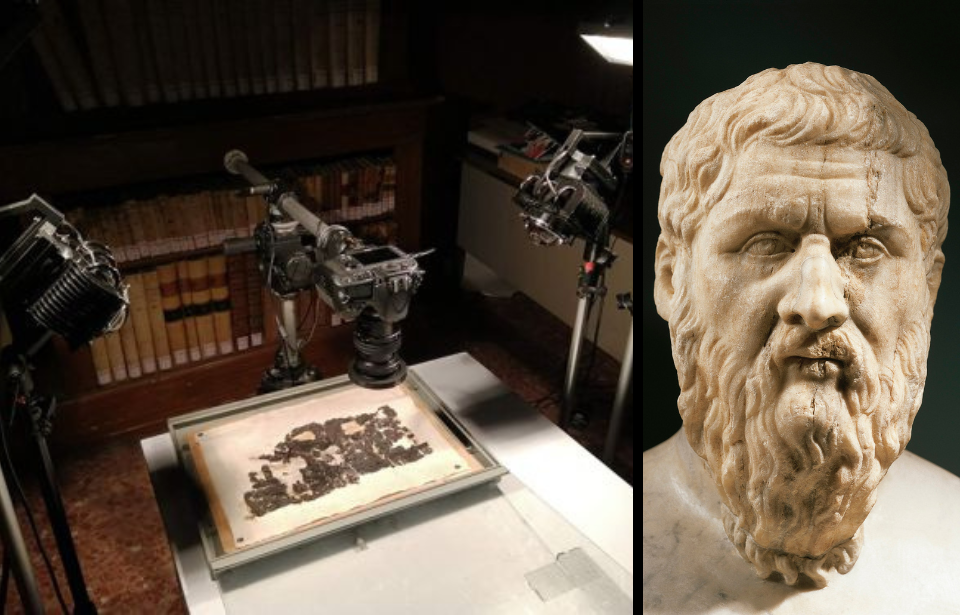A research project has achieved what was thought to be impossible: revealing the text on ancient papyri that could disintegrate at the slightest touch. Using cutting-edge technology, researchers were able to decipher information from carbonized Herculaneum papyri. Previously unknown facts about the ancient philosopher Plato have been discovered, with more information likely to be revealed with further research.
The “Greek Schools” project
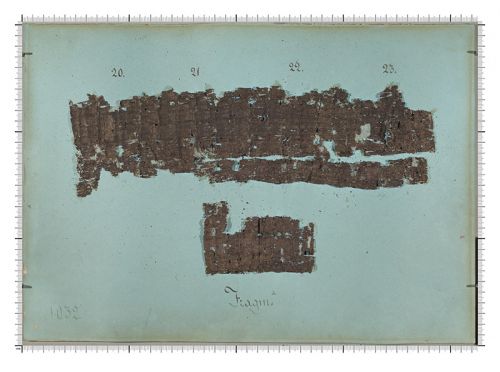
The “Greek Schools” project began in 2021 with the aim of deciphering ancient, carbonized papyri that were recovered but sustained damage from the eruption of Mount Vesuvius in 79 AD. These papyri have been stored in the ‘Vittorio Emanuele III’ National Library in Naples, and the particular passage that has been deciphered is known as the History of the Academy by Philodemus of Gadara.
Due to the fragile nature of the papyri, the project has required both philological expertise and the use of imaging techniques. As such, multiple institutes under the National Research Council of Italy have come together to carry out the work. This undertaking is not without its costs, and the project has been supported by a substantial grant of over €2 million from the European Research Council.
Discovering his final resting place
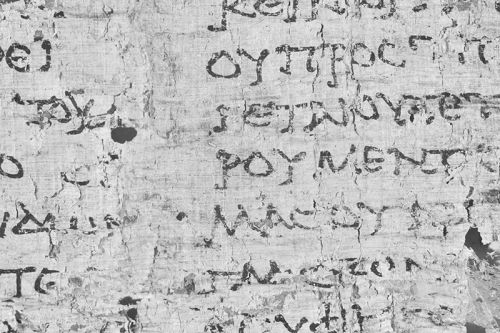
The research conducted revealed an important piece of information about the philosopher Plato that was previously unknown. Prior to this research, Plato’s place of burial was only generally known to be somewhere at the Academy of Athens. However, this text concretely outlines that his burial site was within a garden at the Academy located near the Museion, a sacred area dedicated to the Muses.
Additionally, other important information about the philosopher was revealed as well. In a statement about the project’s findings, it was explained that Plato “was sold as a slave on the island of Aegina perhaps already in 404 BC, when the Spartans conquered the island or, alternatively in 399 BC, immediately after the death of Socrates. Until now it had been believed that Plato had been sold into slavery in 387 BC during his stay in Sicily at the court of Dionysius I of Syracuse.”
They used state-of-the-art methods
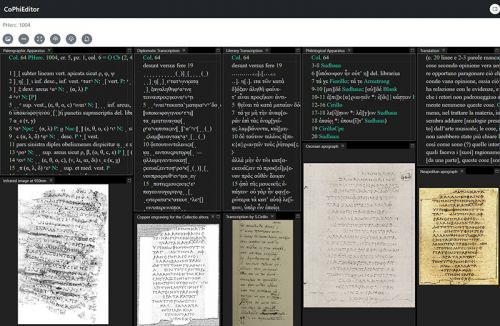
The project’s ability to research and reveal this previously unknown information is thanks to the use of state-of-the-art technology. The methods they employed were non-invasive, an important approach to studying these papyri, as some are too fragile to handle physically and some have layered writing or writing on reverse sides.
Through the use of diagnostic imaging techniques, including infrared, ultraviolet, thermal imaging, and digital microscopy, the “Greek Schools” project was able to make the previously unreadable papyri readable. Successfully doing so makes the future of manuscript analysis all the more exciting, with researchers eager to know what other vital information these ancient texts might be hiding.
Revealing Plato’s final day
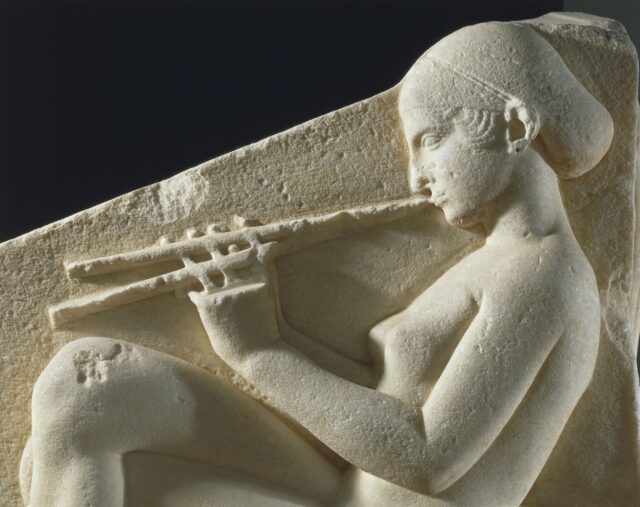
As if learning of his final resting place wasn’t enough, this new technology has also allowed researchers to uncover exactly what it was he was doing on the last day before he died. A passage deciphered from the scroll revealed that the philosopher spent his final evening listening to a Thracian slave girl play flute music. It also revealed that he was rather critical of the performance.
More from us: Construction Worker Uncovers Mysterious Roman Statue Buried Beneath a Parking Lot in England
Plato was a strong supporter of music and its power to penetrate into the very core of the “self,” having said that “because more than anything else rhythm and harmony find their way into the inmost soul and take strongest hold upon it.” As such, it only makes sense that the man was a critic.
Join The Vintage Newsletter community today and unlock a treasure trove of weekly curated content, exploring nostalgia, history, and fascinating facts from the past.
